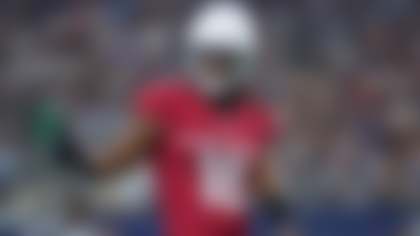For more information or to order the book, visit www.adifferentwaytowin.com
AS CAUSTIC AS THE NFL'S LABOR FIGHTS WERE, there were few issues more personally wrenching for my father than team relocation. One in particular, the 1995 move of the Cleveland Browns to Baltimore, caused a fissure in one of his closest friendships that never fully healed.
Revenue from stadiums is the second-greatest source of money in the NFL, behind only the mammoth television contracts. Beginning in the early 1960s and continuing for several decades, NFL teams often played in publicly financed stadiums that were primarily used by baseball teams, like Pittsburgh's Three Rivers Stadium, which the Steelers shared with the Pirates. There wasn't much to recommend those stadiums. Because they were being built around the same time as Americans were leaving cities to move to the suburbs, they were often constructed near highways and the oval buildings were surrounded by vast parking lots. They were sterile and had little charm--one of their nicknames was "concrete doughnuts"--and when the baseball and football seasons overlapped, the infield dirt cut a swath through the gridiron.
Their major selling point was their price--for the teams, it was minimal because the public footed most of the bill.
Very few new stadiums were built only for NFL teams through the 1980s. As NFL revenue exploded in the early 1990s, it became obvious that it would be increasingly difficult to get public funds to finance the construction of new stadiums. If teams wanted a new building, they would have to find ways to privately finance significant portions of the ballooning costs.
As a result, in the mid-1990s, the NFL was facing a run of franchise instability. With the advent of free agency, teams needed more cash on hand to pay signing bonuses and the like. That means they needed to generate revenue they would not have to share with the other teams. Stadium revenue--from suite sales, for instance--is not shared among teams. So teams that needed revenue went looking for new stadiums and they found them in smaller markets that were willing to foot the bill to build those stadiums while bigger markets were not. The Rams and Raiders had left Los Angeles--the country's second-largest television market--to go to St. Louis and Oakland (a return engagement for the Raiders), respectively. The Houston Oilers announced that they would relocate to Nashville. The Patriots flirted with leaving the Boston suburb of Foxborough to move to Hartford, Conn.
During the early weeks of the 1995 season, after spending years negotiating attempted enhancements to Cleveland Municipal Stadium, Art Modell called Dan with bad news. My family's connection to Cleveland stretched back to visits in the 1940s. Pittsburgh and Cleveland are strikingly similar. Separated by just a two hour drive, they had foundations in steel and manufacturing. As a young man, my father hung out in bars in the Flats and at Terminal Tower. As he got older, he ate in the restaurants of Little Italy and spent spring and summer nights at friends' homes on the Chagrin River. Later, three of his nine children attended school in Cleveland. As a licensed pilot, Rooney made the 28-minute flight from Pittsburgh to Cuyahoga County and Burke Lakefront airports routinely.
Paul Brown, the legendary coach, founded the team that bore his name in 1945 and won the championship of the All-American Football Conference in the Browns' first five years of existence. When the conference folded, the Browns joined the NFL in 1950 and proceeded to win the championship in their first year in the league. In all, they went to the championship game of their league every one of the first 10 years of the team's existence.
And that was good for the Steelers.
When the Steelers needed financial help to survive in the late 1940s and 1950s, the Browns' entrance into the NFL made the difference. The Steelers received 40 percent of the sold-out gate receipts in Cleveland and 60 percent of the gate when throngs of Browns fans traveled to Pittsburgh for Steelers home games.
The link to Cleveland grew even stronger when Modell bought the team in 1961. While my father focused his attention on labor, Modell, a former television producer and advertising man, emerged as one of the league's primary leaders on television. Their work went hand in hand for decades as the league grew, and their families became personally close.
But when Modell called Dan Rooney in 1995, he told him that he planned to leave Cleveland and move his team to Baltimore. Dan was stunned and upset because he did not believe team movement was good for the league and because he had considered Modell to be like him, a league man who would put the interests of the NFL over his own. He implored Modell to stay, telling him that Browns fans, like Steelers fans, were the most loyal in the game.
When it became clear that Modell would not turn back, Dan Rooney told him: "I'm for Cleveland."
This was an emotional experience for my father. He thought leaving Cleveland--like Pittsburgh, a place where football was invented--and its fans was both immoral and impractical. It was simply wrong. And he thought the NFL could not keep saying it was the good guys and then keep doing bad things.
My father would have preferred that his friendship with Modell not be strained, but he believed Modell had crossed a line. Modell was hurt that Dan had chosen loyalty to the league over loyalty to their personal friendship, and he was angry that Dan quickly became one of the prime people pushing to put a team back in Cleveland. In his later years, my father looked like a cuddly old man. But that countenance belied his love of a good argument and his iron will.
It was, certainly, the most brutal test of Dan's determination not to bend his values, which emphasized what was best for the league. And he did not let a personal relationship get in the way of that.
Still, my mother knows my father was pained by the fissure with Modell. They had been close for more than 30 years, and she has often said that a little bit of their friendship died with the move. My mother remembers it took several years before Modell and my father would even acknowledge each other when they were in the same hallway at league meetings or at games. The strain even extended to my mother's friendship with Modell's wife, Patti.
In the late 1990s, the Steelers would go through a similar, sometimes dispiriting, struggle to get a new stadium built in Pittsburgh. Roger Goodell was an executive for the league under Tagliabue and he remembers a phone call with Rooney and Tagliabue after a vote on stadium funding had gone against the Steelers. The conversation was essentially about whether Dan should threaten to move the Steelers out of Pittsburgh if public money was not made available for a stadium.
"He was very opposed to it," Goodell said. "He never wanted to do that. He said, 'I know, I've seen it, I saw what others have done. I don't wanna do it that way.'"
Goodell thinks Modell's experience went through his head as the Steelers struggled for a stadium, and he knew he could not even threaten to move after being so critical of Modell's decision. And he believes Dan felt Modell overreacted when the Cleveland Indians got a new baseball stadium and he was still facing headwinds.
In a Saturday meeting with Cleveland officials in New York just before Modell made his announcement, Goodell and Tagliabue quickly worked out an arrangement to keep the Browns' name, colors and team records and archives with the city of Cleveland, essentially putting the Browns franchise in a state of suspended animation. Modell could take his players to Baltimore, but it would function almost as an expansion team. Any remnants of his old franchise had to stay back in Cleveland, in anticipation of a team eventually being there again.
Then began the painstaking process of securing a commitment for a new stadium that would be largely paid for by the league and deciding whether the team for Cleveland would be an expansion team or a relocation. Goodell recalls that Dan was instrumental in convincing the mayor of Cleveland that he had to take the lead in getting the new stadium built.
Over the course of three years, the job of returning a team to Cleveland--from getting the stadium built to deciding to make it an expansion team to finding the right owners--fell largely to Goodell and Dan Rooney. Tagliabue, who knew his friend Dan Rooney could take it, was well aware that Modell did not want a team to be put in Cleveland. The commissioner wanted to distance himself from the fray. Tagliabue would cast Goodell and Rooney as the bad guys to keep the peace with Modell.
Dan Rooney had known Goodell before the Cleveland project, but they grew exceptionally close during that period.
Goodell said my father taught him how to think about league issues and how to get things done. They worked together on some of the most difficult issues the league faced: Cleveland, realignment, the Rooney Rule. There was nothing they did not talk about. Dan Rooney was mentoring Goodell and preparing him to be the commissioner, although he never told Goodell that directly.
In 1999, the Browns, then owned by the Lerner family--Al Lerner, ironically, had helped his friend Modell move the team to Baltimore--resumed play in a new stadium in Cleveland. And the Baltimore Ravens took the place of the Browns as the Steelers' most heated rival. And when the Ravens beat the Giants in Super Bowl XXXV, five years after they left Cleveland, Dan went into the Ravens locker room and embraced his old friend Modell.
For more information or to order the book, visit www.adifferentwaytowin.com











